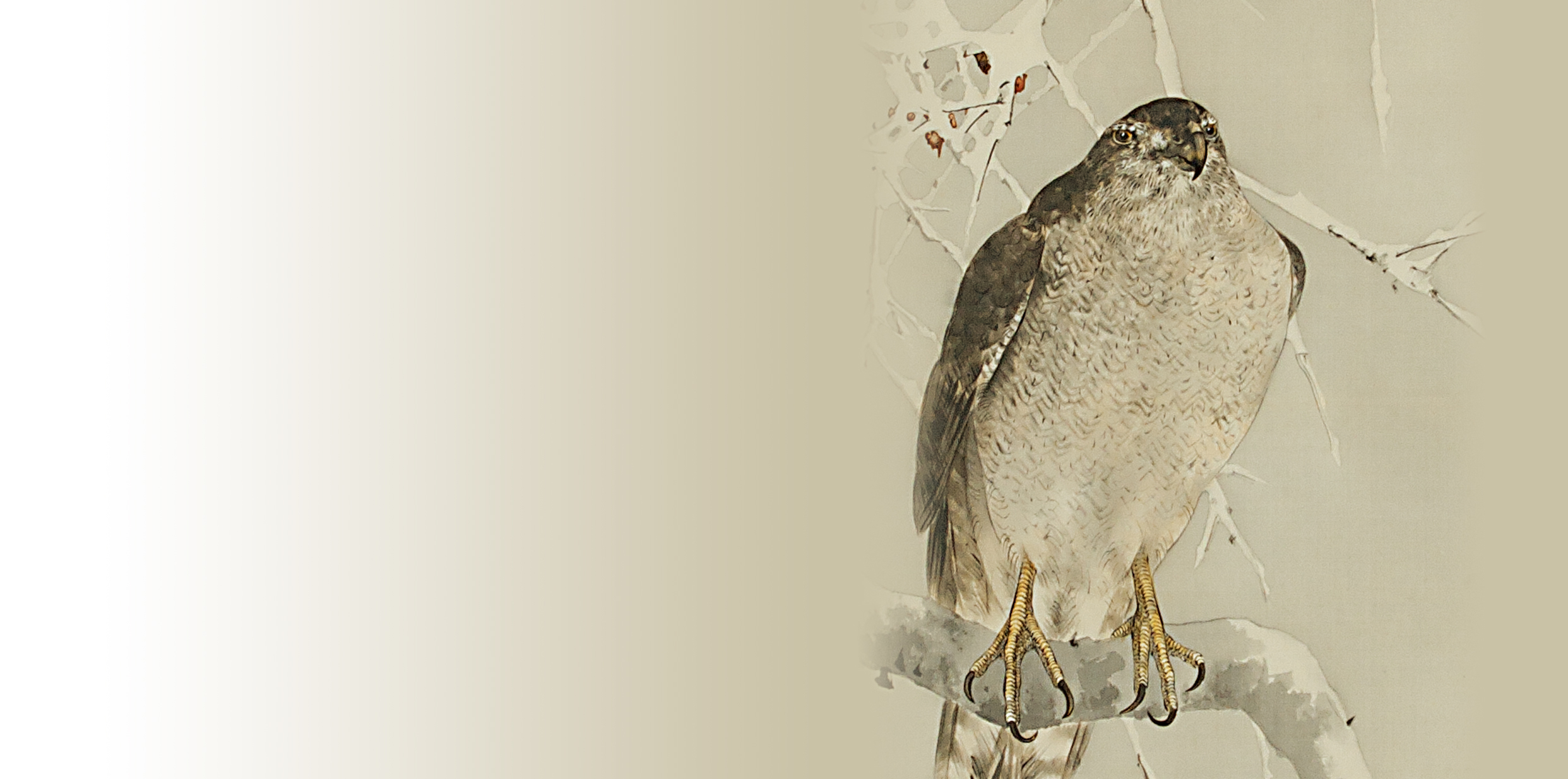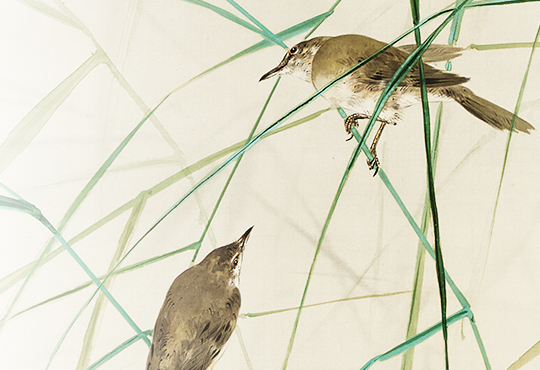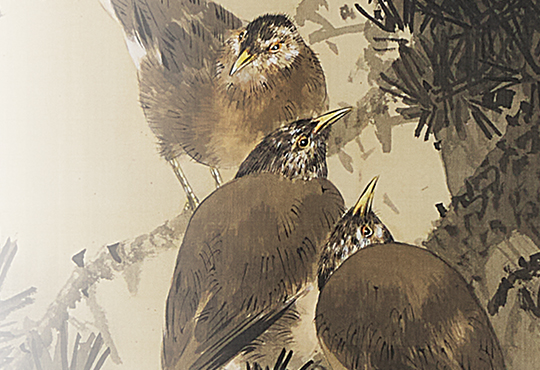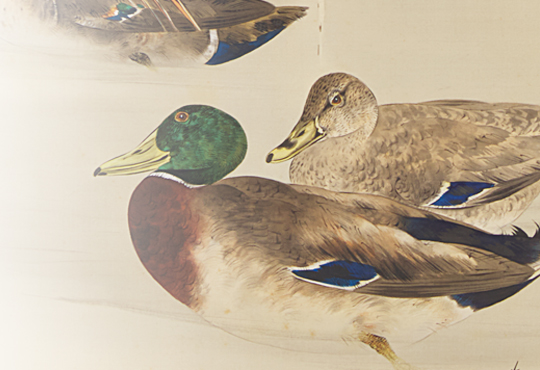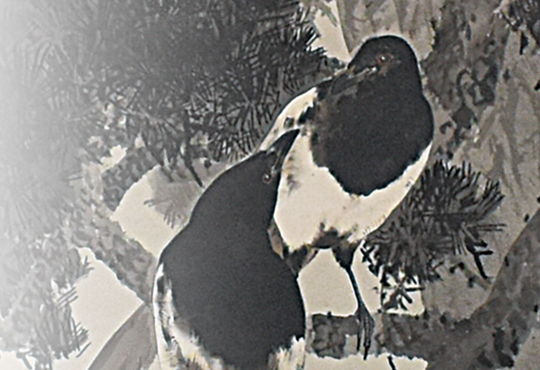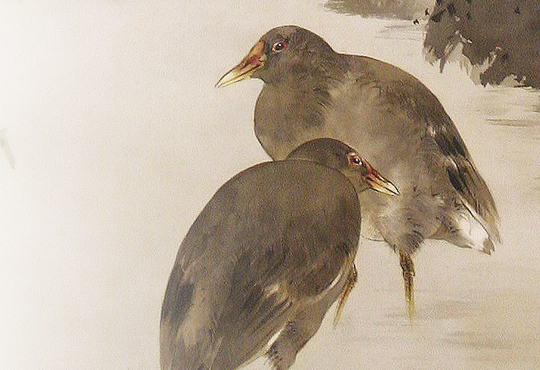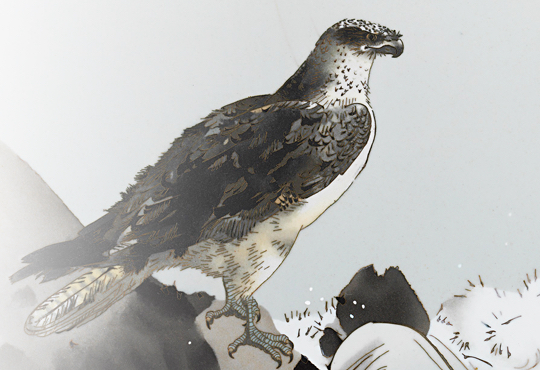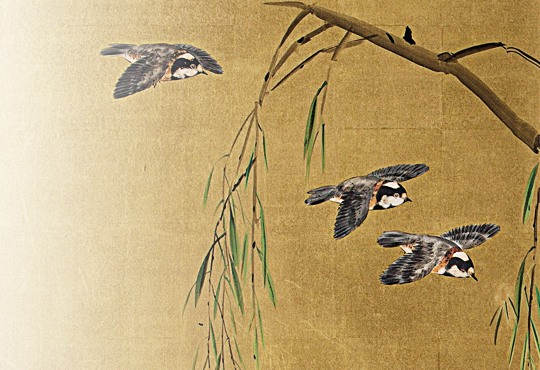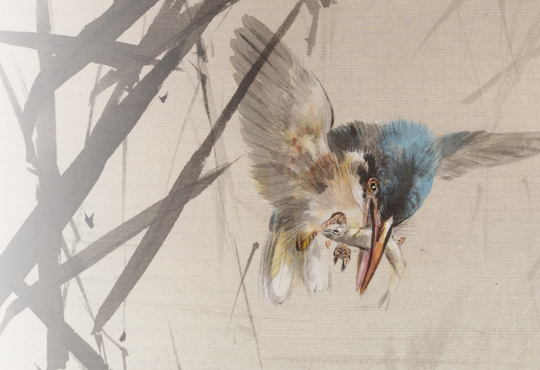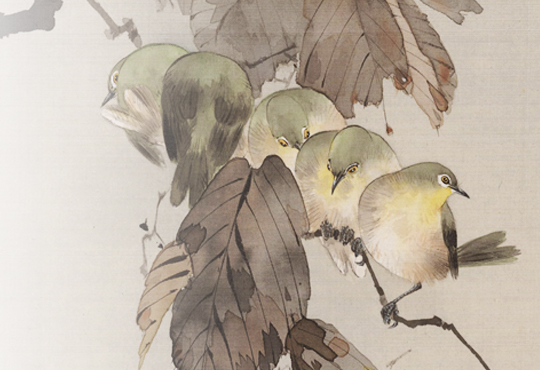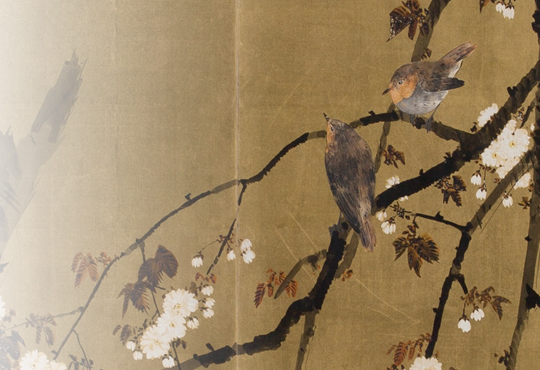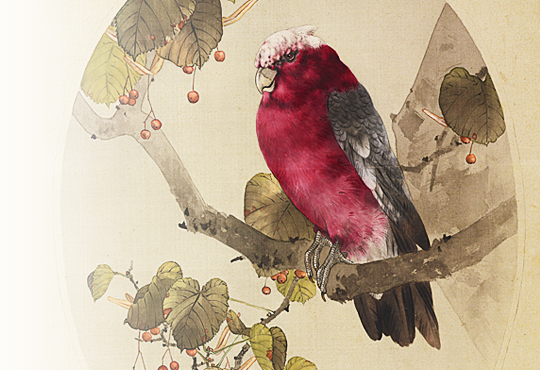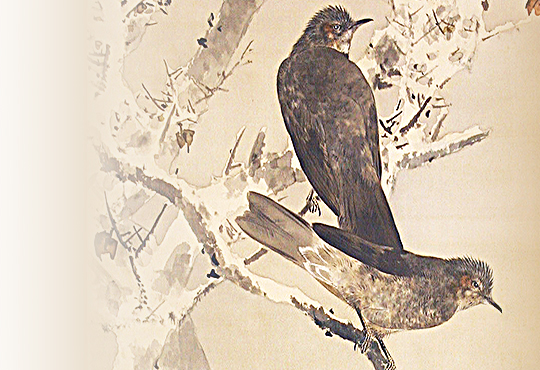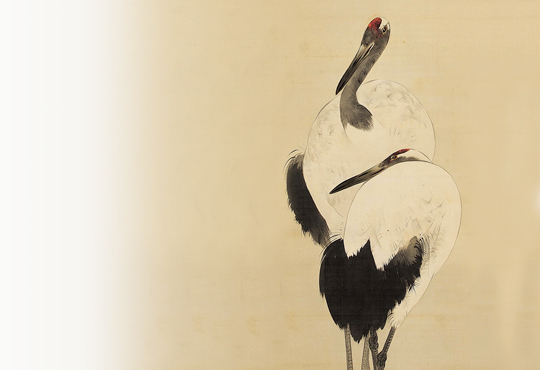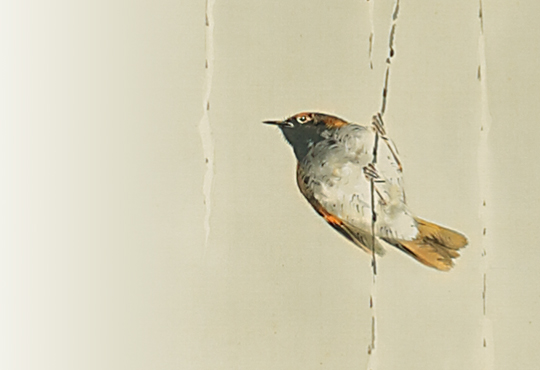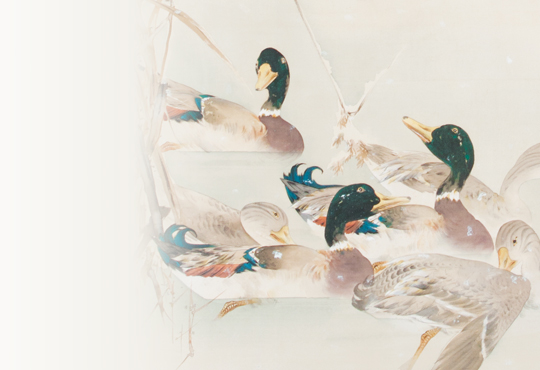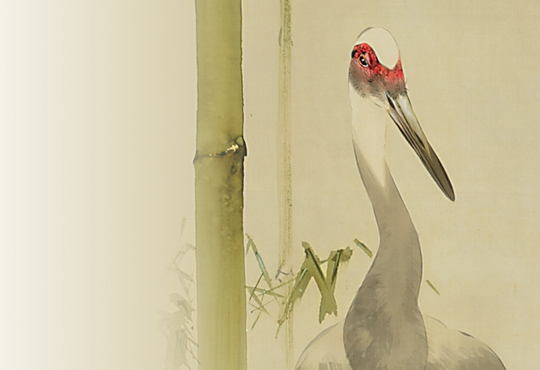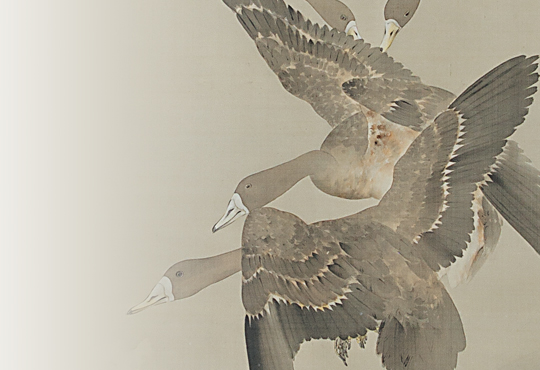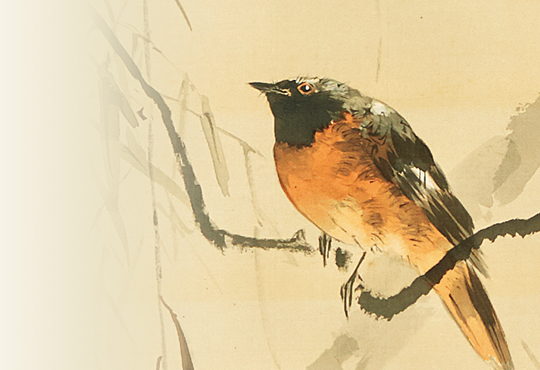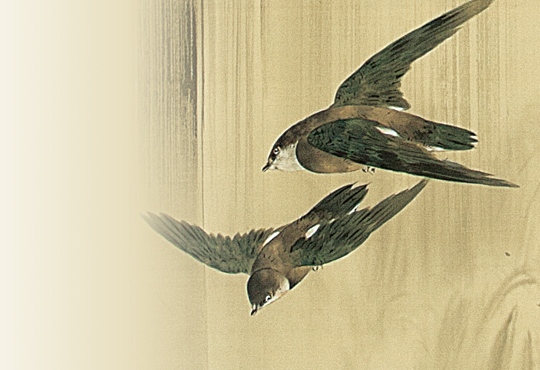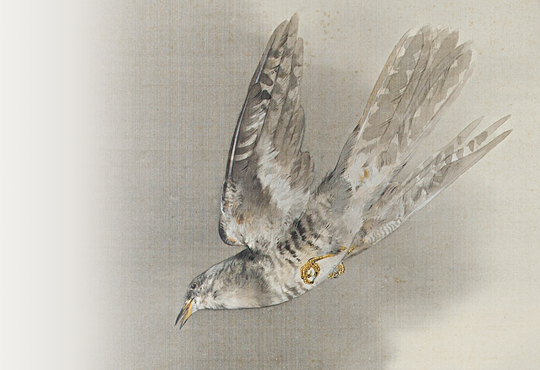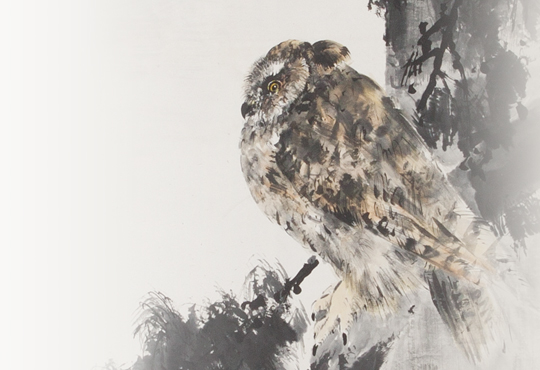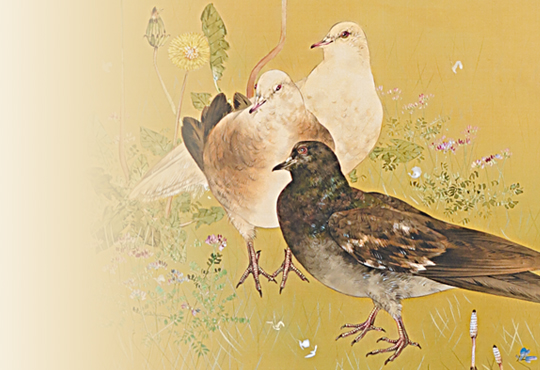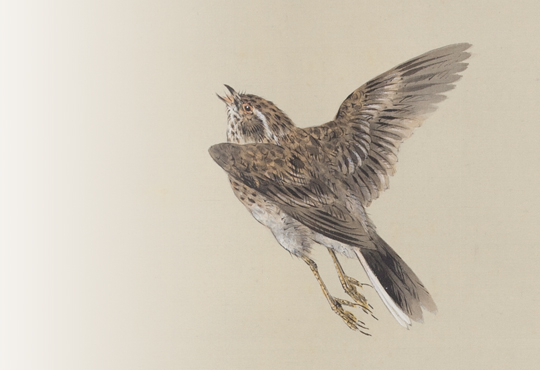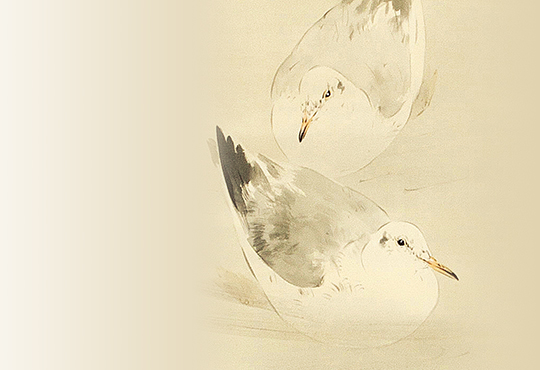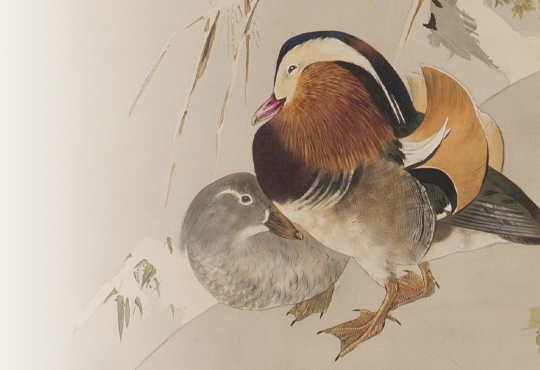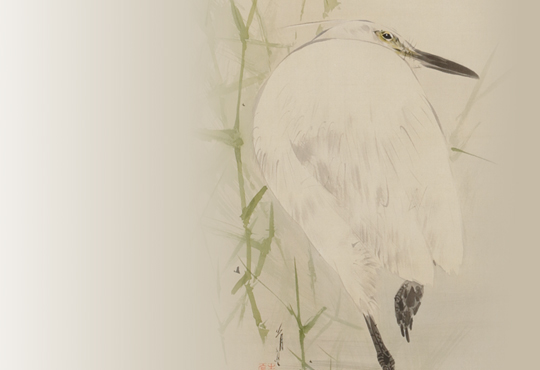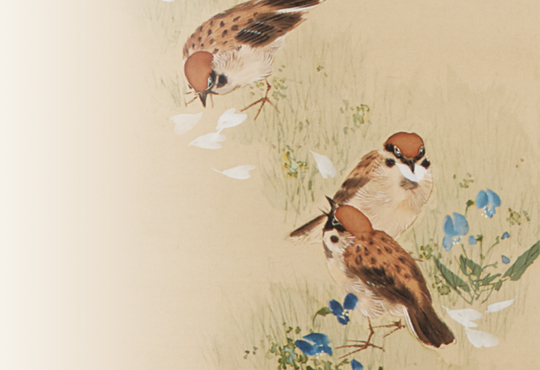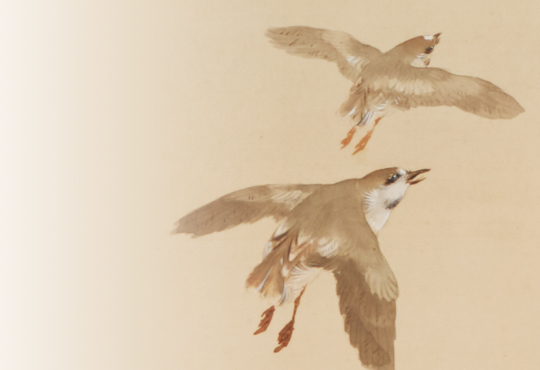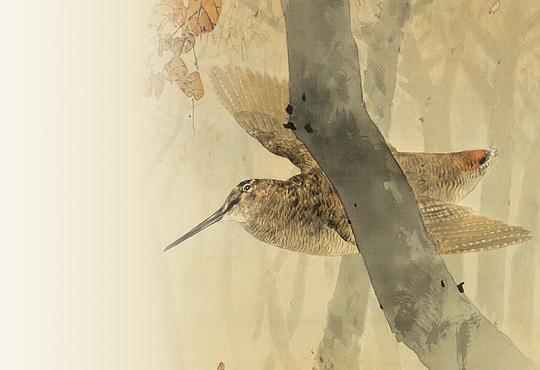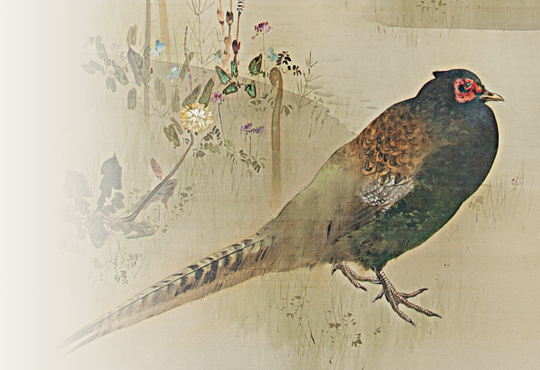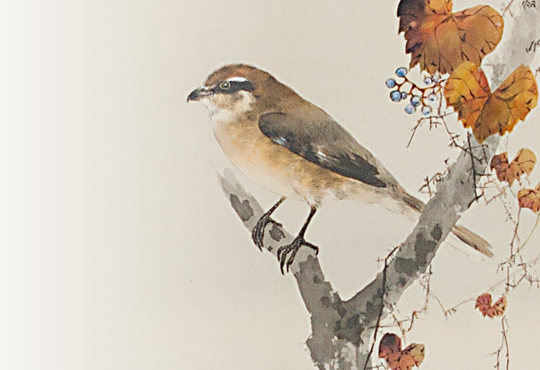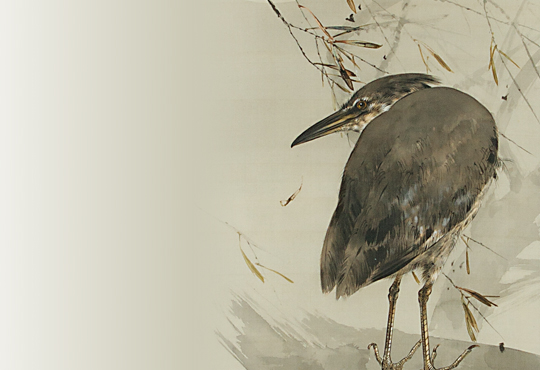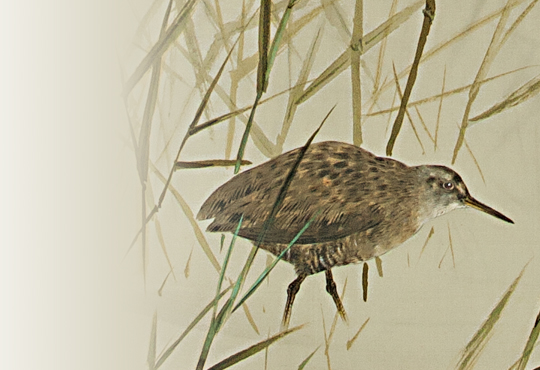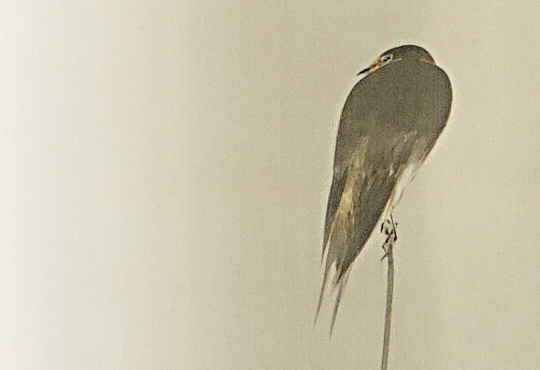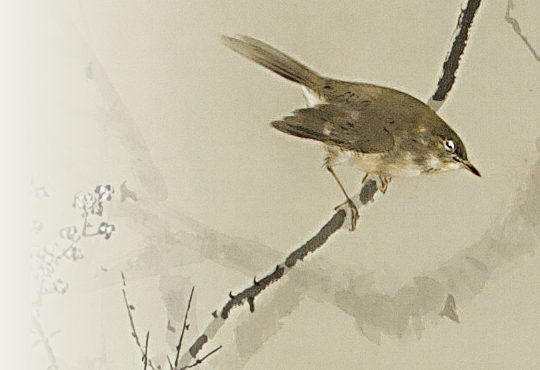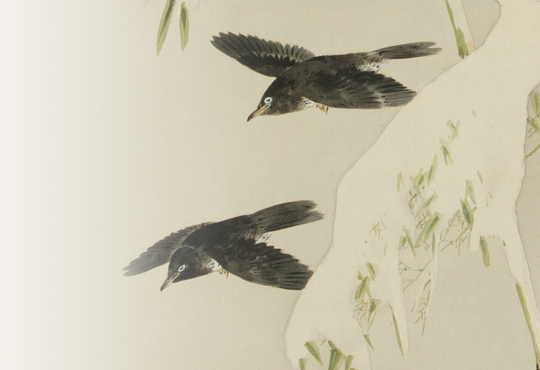Hawk
A set of twelve scrolls,
color on silk, with a box signed and sealed by the artist
size : 115×40 ㎝ /212×54 ㎝
vol.07 The Curse of Traditional Style: Hawk
Within the Japanese bird-and-flower paintings, birds of prey such as hawks and eagles are popular as a subject. Hanging scrolls depicting their brave appearance are almost always seen in museums and galleries specializing in old Japanese paintings. The species of the birds are various (mostly Golden Eagles, White-tailed Eagles, Black Kites, Mountain Hawk-eagles, Northern Goshawks, Eurasian Sparrowhawks) and many of them perch on pine trees, dead trees, or wooden platforms used by falconers, and some hunt other animals. As a symbol of power and good luck, many artworks have been dealing for long time with this theme.
But personally, I don’t like most of the hawks and eagles in Japanese paintings because of the depiction of their face. Real hawks and eagles have big round eyes facing the front for binocular vision. This is a common facial feature in predatory mammals such as cats and dogs as well, and it creates a similar impression. It means that the faces of real hawks and eagles are unexpectedly cute, closely resembling that of cats and dogs. In contrast, hawks and eagles in Japanese paintings have the upper part of the eyes linearly drawn, giving their faces a somewhat serious and grim appearance. This is a common characteristic found both in realistic and deformation style paintings.
This common characteristic probably resulted in response to a huge market demand. Historically the main demand for Japanese paintings came from authoritative figures in politics and economics such as court nobles, monks, knights and wealthy merchants. Among them, knights such as warlords and feudal lords with big power in the Middle Ages honored bravery and wanted fortunes of war above anything else. There is no doubt that hawks and eagles which represent bravery and good luck were in high demand among them. Cuteness was not preferred so that the face was deliberately drawn with a serious and grim appearance. This initiated popularity and as time passed it became a traditional style, like a curse, which nobody could ignore. There was no room any more for the personalities of artists and painters. Even Maruyama Ōkyo and Itō Jakuchū could not avoid this “curse” .
Then, how was it for Seitei, “the Painter of Birds” ? The first time I saw this “Seitei’s Hawk” , I felt discord and puzzled. This is a Eurasian Sparrowhawk, a species of small hawk, and the details of each part of the body and feathers are very realistic (for example the depiction of the leg’s scales is breathtaking). However, its body contour is out of shape and too fat, and its face is unnatural and does not look very attractive. This is because the hawk’s right eye (the left side as you face it) is drawn in the rear, and the eyes are located disproportionately; too far apart from each other. As a result, although the eyes do have a serious appearance, it looks sort of funny.
Perhaps this may be because he used a badly stuffed hawk as a model. A stuffed bird reproduces its life-like appearance, by removing most of its meat, internal organs and bones from its fresh corpse and using cotton and wire instead. The wings, legs and head are formed by leaving parts of their bones as they are. The head skin is peeled off to remove the brain and eyes, and the skull is again covered with the same skin and finished with artificial eyes. If one cannot place the peeled skin back in its original place, the artificial eyes cannot be put in their proper places, resulting in an unbalanced face. In this situation Seitei might not be able to capture a hawk’s face properly. It can therefore be inferred that the unnaturalness of this work resulted from a realistic depiction of a stuffed hawk with distorted face.
But this imbalance must not be appropriate for aesthetic artwork. Seitei could have restored the harmony by redrawing the bird’s face beautifully with his skills. Why didn’t he do that? I think it is because Seitei was struggling to get rid of the “curse” . Like myself, Seitei must have been frustrated with the unrealistic depiction of the hawk’s face in traditional artworks. However, the traditional style must have always troubled his mind as it would have been quite difficult to detract from it despite being aware of the issue. If he tried to redraw a distorted face, it will naturally become traditional style. For this very reason, perhaps Seitei purposely chose to draw the imbalance as it is.
In “Hawk on Ivy” (private collection), Seitei drew a different species, an adult of Northern Goshawk. In this artwork, although the face lost sternness, the eyes are smaller than real. Here, Seitei managed to avoid the “curse” but still seems reluctant to accepting the “cuteness” of the real hawk. In conclusion, it can be said that in his continuous struggle to move away from the “curse” of traditional Japanese paintings, Seitei was the first painter to take a step forward in detracting from it.
Author : Masao Takahashi Ph.D. (Ornithologist)
Dr. Masao Takahashi was born 1982 in Hachinohe (Aomori prefecture) and graduated from Rikkyo University’s Graduate School of Science. Dr. Takahashi specializes in behavioral ecology and the conservation of birds that inhabit farmlands and wet grasslands. Focusing on the relation between birds and art, he has participated in various museum and gallery talks.
